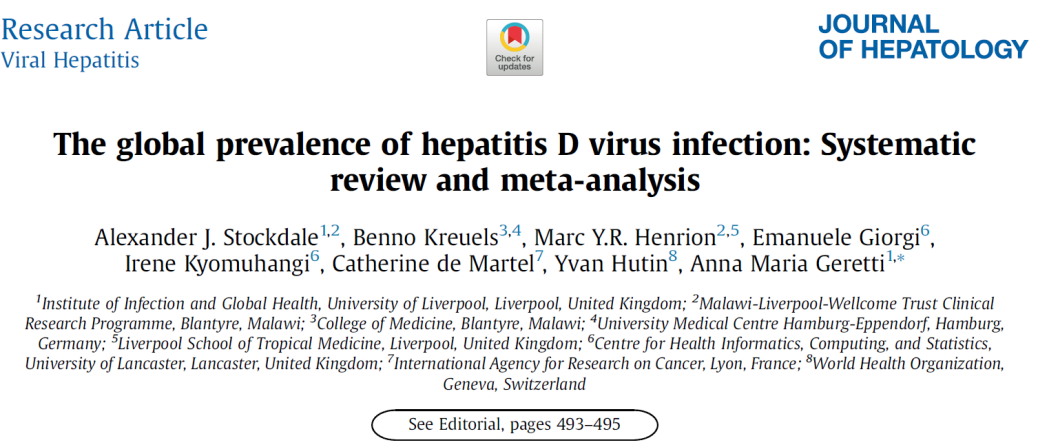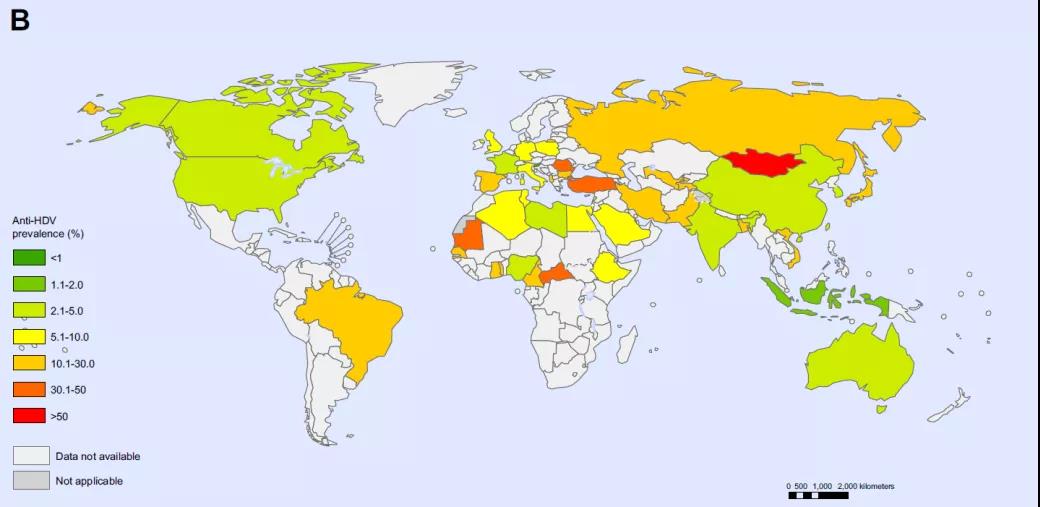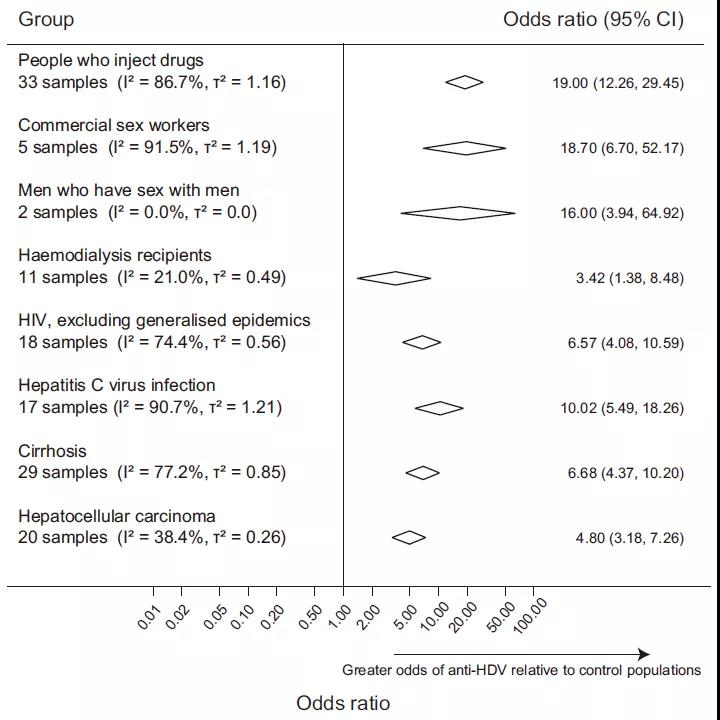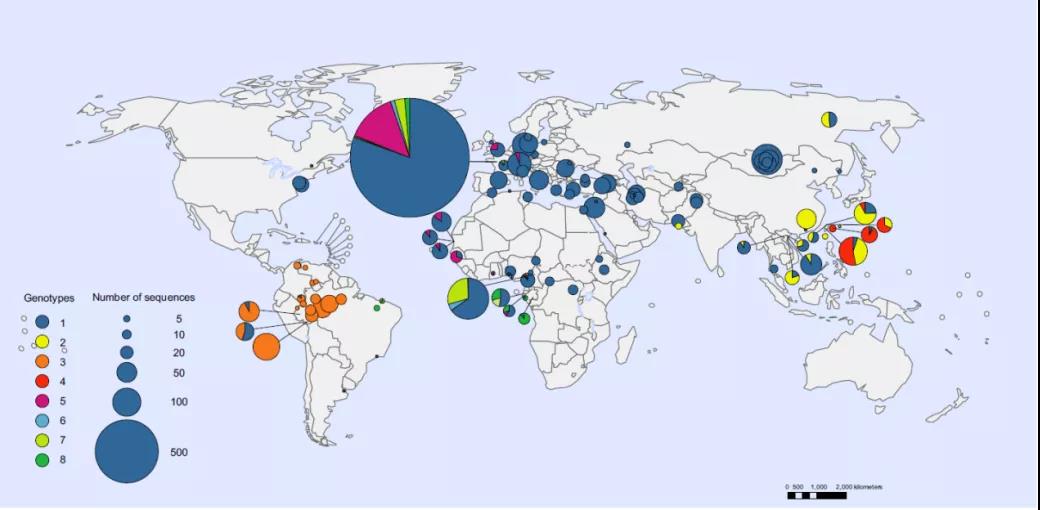Global prevalence of hepatitis D virus infection
- Normal Liver Cells Found to Promote Cancer Metastasis to the Liver
- Nearly 80% Complete Remission: Breakthrough in ADC Anti-Tumor Treatment
- Vaccination Against Common Diseases May Prevent Dementia!
- New Alzheimer’s Disease (AD) Diagnosis and Staging Criteria
- Breakthrough in Alzheimer’s Disease: New Nasal Spray Halts Cognitive Decline by Targeting Toxic Protein
- Can the Tap Water at the Paris Olympics be Drunk Directly?
Global prevalence of hepatitis D virus infection
Global prevalence of hepatitis D virus infection. A systematic review and meta-analysis of the global prevalence of hepatitis D virus infection. Research direction: The etiology of hepatitis B virus and related diseases.
Summary
The authors used the binomial mixed-effects model and the random-effects model to evaluate the global hepatitis D virus (HDV) infection rate, and explored the cirrhosis of HDV in the surface antigen (hepatitis B surface antigen, HBsAg) positive population. And the role of hepatocellular carcinoma progression.

HDV is a satellite RNA virus that uses HBsAg as its viral envelope and enters cells through the same liver cell receptor as HBV. Co-infection of HBV and HDV can cause a large area of liver necrosis, manifested as severe or even fulminant hepatitis, with a high mortality rate, and it is the most serious form of viral hepatitis.
These two viruses are usually eliminated during the recovery process of adult HDV and HBV co-infection. However, HDV generally persists in the body of chronic HBV-infected patients who are superinfected.
Compared with simple chronic HBV infection, co-infection can accelerate the progression of cirrhosis and increase the risk of hepatocellular carcinoma (HCC). Therefore, hepatitis D is also one of the heavy burdens of liver diseases worldwide.
The prevalence of HDV antibodies in the general population and clinical liver disease population
In the general population, the overall global HDV antibody prevalence rate is 0.16% [95% confidence interval (CI) 0.11-0.25], which indicates that there are approximately 12 million HDV seropositive individuals worldwide (95% CI 870-1870). The prevalence of HBsAg-positive people in different regions ranges from 3.0% in Europe to 6.0% in Africa. The positive rate of HDV antibodies in these HBsAg-positive people is 4.5% (95% CI 3.6-5.7). The prevalence of HDV antibodies in the HBsAg-positive population among the general population in different countries is shown in Figure 1. However, among clinical liver disease populations, the global prevalence of HDV antibodies in HBsAg-positive populations is about 16.4% (95% CI 14.6-18.6), of which about 3.3% in the Americas and 19.5% in Europe. The prevalence of HDV antibodies in HBsAg-positive people in clinical liver disease populations in different countries is shown in Figure 2.


The prevalence of HDV antibodies in different populations
Compared with the general population or asymptomatic HBsAg positive population from the same geographic area, it is used in injecting drug users, hemodialysis recipients, men who have sex with men, sex workers, and HCV (hepatitis C virus) or HIV (human immunodeficiency virus). ) The detection rate of HDV antibodies in carriers is higher.

HDV RNA detection and genotyping
Overall, the detection rate of HDV RNA is correlated with the prevalence of HDV antibodies. For every 10% increase in the prevalence of HDV antibodies, the detection rate of HDV RNA increases by about 3%. The detection rate of HDV RNA in the general population is lower than that in the clinical liver disease population. According to the current limited data, it is estimated that there are about 7.1 million people infected with the virus (HDV RNA positive) in the world, that is, the prevalence of HDV viremia in the general population is about 0.09%.
Figure 4 shows the results of the author’s analysis of the HDV genotypes of 4159 cases worldwide. Among them, genotype 1 dominates the world, and the distribution of other genotypes shows geographic heterogeneity. For example, genotype 2 is concentrated in Asia, and genotype 4 is more popular in Japan and Taiwan.

The attributable proportion of liver cirrhosis and HCC among HBsAg-positive people
Compared with control populations from the same geographic area, the prevalence of HDV antibodies in patients with liver cirrhosis or HCC is higher. Among the HBsAg-positive people with sequelae of infection, the population attributable score showed that HDV accounted for 18% of cirrhosis (95% CI 10-26) and 20% of HCC (95% CI 8-33).
Sum up
The research data in this article shows that, despite significant regional differences, HDV co-infection is widespread among HBsAg-positive people worldwide. The prevalence of HDV in HBsAg-positive people is about 4.5%. The prevalence of HDV in HBsAg-positive liver disease patients is about 16.4%. Others, such as injecting drug users, hemodialysis recipients, HCV or HIV carriers, are more likely to have HDV seropositivity.
HDV is related to the progression of chronic hepatitis B disease. HDV infection can cause about 18% of hepatitis B patients to suffer from cirrhosis, and about 20% of hepatitis B patients suffer from liver cancer, which is the cause of cirrhosis and HCC in a large part of HBsAg-positive people.
In addition, the inhibitory effect of HDV co-infection on HBV DNA levels will interfere with the correct classification of HBV infection status. If all people newly diagnosed with chronic HBV infection are tested for HDV antibodies, it will help monitor and identify HBV-related diseases.
In short, hepatitis D is a widespread but neglected disease. Considering the role of HDV in causing liver disease, it is very necessary for all patients with chronic HBV infection to perform routine confirmation checks on whether they are accompanied by HDV infection. This will help to take effective public health response measures and Will provide more information for the development of new drugs.
(source:internet, reference only)
Disclaimer of medicaltrend.org



